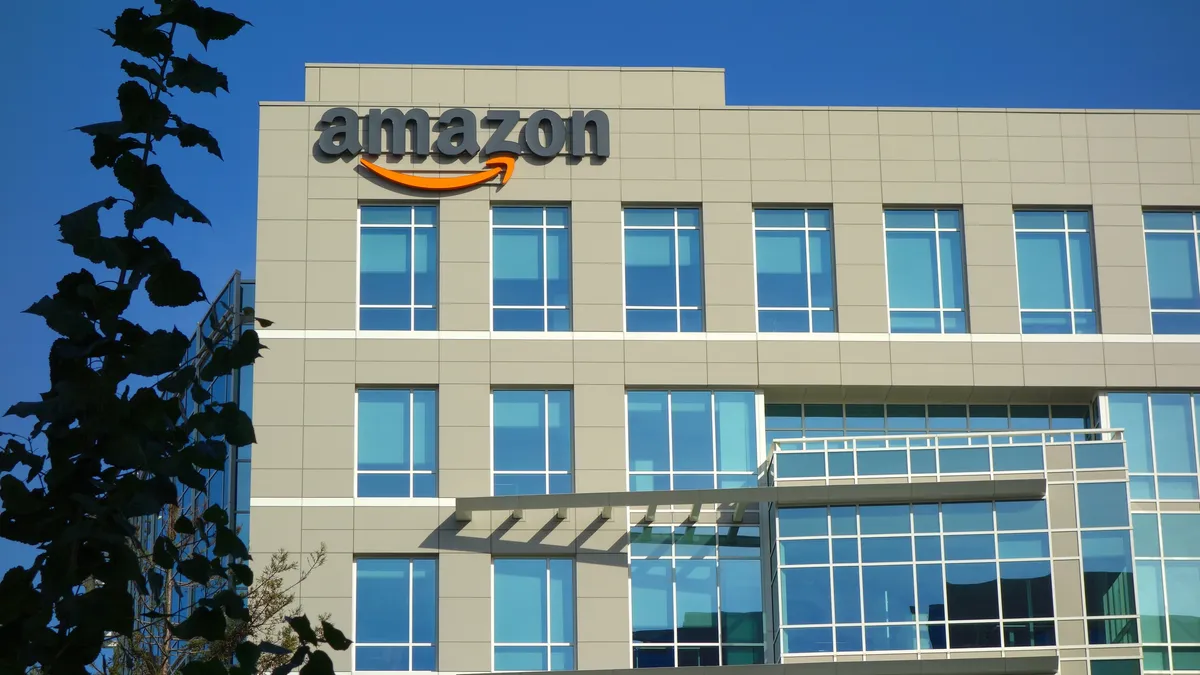Dive Brief:
-
Amazon on Thursday reported that third quarter net sales rose 29% to $56.6 billion, up from $43.7 billion in the year-ago quarter.
-
Online store sales in the quarter rose 10% (11% currency neutral) to $29.1 billion as physical store sales reached $4.25 billion in the quarter — up from $1.28 billion in the year ago quarter, according to a company press release. The percentage of goods from third party sellers sold on the site reached 53% in the quarter, CFO Brian Olsavsky said on a conference call.
-
Operating income rose to $3.7 billion up from $347 million last year, as net income rose to $2.9 billion, up from $256 million a year ago. Olsavsky dismissed rumors of a shipping rate hike from the U.S. Postal Service as routine business and said the company "negotiates hard" to get the best rates.
Dive Insight:
Amid Amazon's usual vigorous growth in the third quarter are some signs that the e-commerce giant is shifting its emphasis.
The company boasted strong growth in all divisions, but, as usual, its AWS cloud services (and increasingly its ad revenue) carried the day. Much of Amazon's growth is coming from those businesses, as well as services like digital book and music subscriptions. And yet more of its sales are coming from its marketplace.
"It is evident that there is a divide in performance between the product and service sides of the business," GlobalData Retail Managing Director Neil Saunders said in comments emailed to Retail Dive. "Service revenue, including Amazon Prime subscriptions, continues to rise at a healthy pace. However, product growth slipped to 17.3% from 28.8% last quarter. Some of this is down to the acquisition of Whole Foods partially annualizing out this quarter, but that is not the sole reason for the more modest outcome."
On a conference call with analysts Thursday, CFO Brian Olsavsky emphasized the company's grip on expenses, noting that its headcount through the first nine months of the year is up 13% year over year. "We're banking some of the investments from prior years and looking to gain control," he said, saying that applied to the company's warehouse and fulfillment as well as its cloud services.
Those efficiencies could be especially lucrative for Amazon considering the growth of its marketplace, where the e-commerce giant collects fees for its fulfillment and warehousing, while its sellers do the merchandising and take on inventory risk. "They seem to be using the marketplace as a way to balance some of the company's financial needs with the consumers' desire for selection and good prices," Keith Anderson, senior vice president of strategy and insights at Profitero, told Retail Dive in an interview. "It's not only based on these earnings — the shift to 53% reflects some of the trends of the last couple of years."
Amazon's growth rate in North America was 35% with Whole Foods, (24% without), but, as healthy as that sounds, it was a little below average, Saunders said, noting product sales aren't rising as quickly as in the past, "a slightly worrying prospect given the healthy consumer economy."
There are some realities that are beginning to haunt Amazon, he said. One is that at two decades old, the company is on "a natural maturation curve ... especially for well-established categories." Plus, in a good economy, consumers are less inclined to turn to Amazon for the lowest price. Amazon also now has more rivals to contend with.
"By far the most significant reason is that there is more online competition in online retail than there has ever been, and that competition is more effective than it has ever been," Saunders said, noting Walmart, Target and Macy's have all upped their game. "In our view, Amazon needs to work doubly hard on the retail side as other determined players are now becoming more aggressive and are gaining ground."














